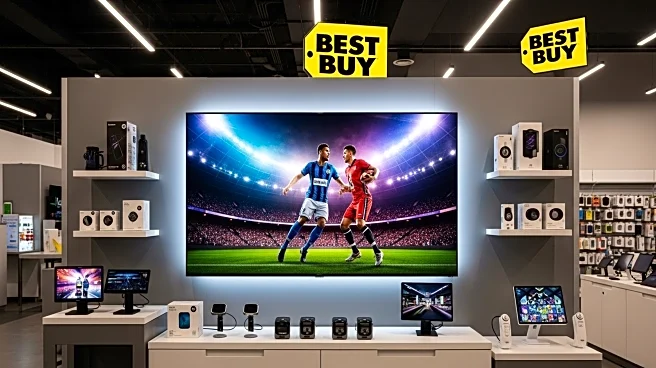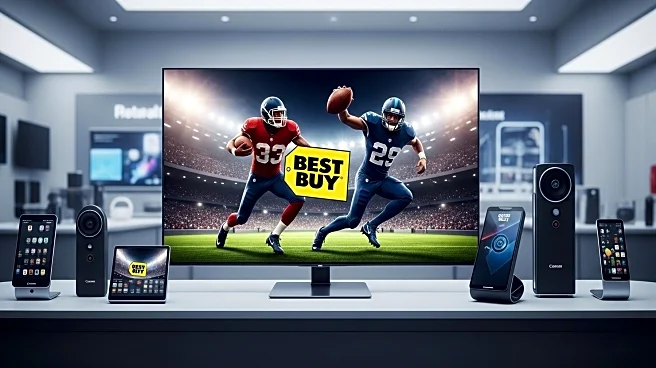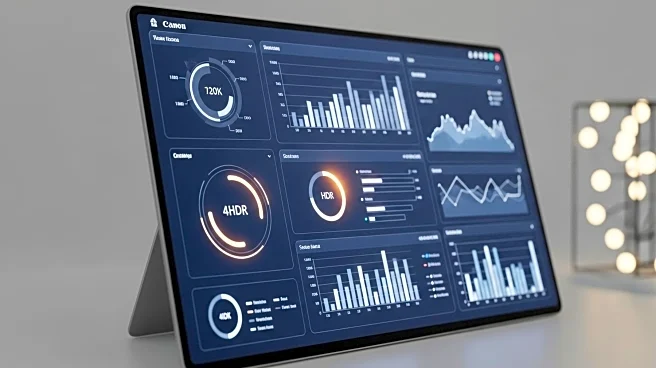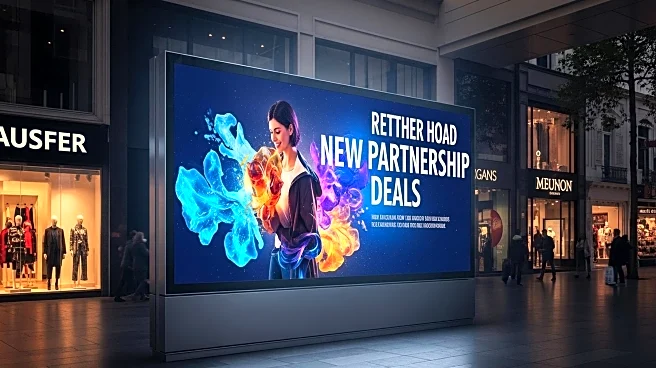What's Happening?
Gas stations and convenience stores are leveraging untapped physical advertising spaces, such as pump displays and in-store digital signage, to enhance customer engagement and drive sales. By integrating these assets into a larger omnichannel retail media network (RMN) strategy, these establishments aim to convert pump visits into purchases, increase transaction values, and boost brand loyalty. The success of this initiative depends on a scalable strategy that aligns content, technology, data, and measurement with the store's broader media network. Key elements include a robust tech stack, automated dynamic content strategies, streamlined operations, and effective use of first-party data. These efforts are supported by technologies like content management systems and ad servers that enable real-time content delivery and dynamic scheduling.
Why It's Important?
The integration of digital signage and advertising at gas stations and convenience stores represents a significant opportunity for these businesses to increase revenue and enhance customer experiences. By utilizing first-party data and programmatic advertising technologies, these establishments can offer personalized and contextually relevant content to shoppers, thereby improving engagement and loyalty. This approach not only helps in driving immediate sales but also strengthens long-term customer relationships. The ability to measure and report on the effectiveness of these strategies is crucial for optimizing performance and demonstrating ROI to brand partners. As the retail landscape evolves, adopting such innovative media strategies can provide a competitive edge and ensure sustained business growth.
What's Next?
Gas stations and convenience stores are expected to continue expanding their retail media networks by integrating more advanced technologies and refining their strategies. This includes further leveraging first-party data to enhance personalization and targeting, as well as adopting standardized measurement and reporting practices to better assess campaign performance. As these networks grow, collaboration with third-party vendors and the use of programmatic advertising platforms will likely increase, providing more opportunities for revenue generation. Additionally, ongoing advancements in technology may offer new tools and capabilities to further optimize content delivery and shopper engagement.
Beyond the Headlines
The shift towards digital signage and retail media networks in gas stations and convenience stores highlights broader trends in the retail industry, such as the increasing importance of data-driven marketing and personalized customer experiences. This development also raises considerations around data privacy and the ethical use of consumer information. Establishing robust privacy safeguards and consent frameworks will be essential to maintaining consumer trust while leveraging data for marketing purposes. Furthermore, the success of these strategies may influence other retail sectors to adopt similar approaches, potentially leading to widespread changes in how businesses engage with customers at the point of purchase.










